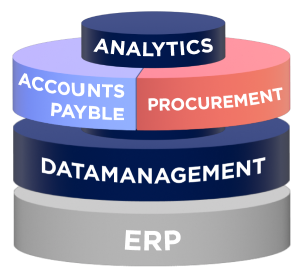3 min read
Correctly optimizing working capital turns Finance into a profit centre
Jeroen Rozeboom, Digital Transformation Specialist
Sep 23, 2021 5:11:48 PM
Working capital is a recurring topic on the Finance department’s agenda. When it comes to optimizing working capital, the majority of time has been spent on debtor management in recent years. However, a well-designed purchase-to-pay process is equally important. In fact, if you do this well, you can even turn Finance into a profit centre.
It can be difficult to maintain a good overview of the working capital position, especially for large organizations. But if hundreds of invoices have to be sent to customers (each with their own payment terms), a good overview is essential.
Most organizations have put a lot of effort into optimizing their invoicing and payments process in recent years. Digital invoices are sent out on the day that the goods or services are supplied, they are clear and include all relevant codes, and digital reminders are sent out on the first day of the payment term being exceeded; it all runs like a well-oiled order-to-cash machine.
In other words, everything is set up to receive customers’ money promptly so that the organization can meet its own financial obligations and avoid the need for borrowed capital (and the associated costs). However, it is important to remember that an automated purchase-to-pay process makes an equally strong contribution to this on the other side, provided that it is designed well.
Payment discounts as an instrument
The most important instrument within the purchase-to-pay process in order to optimize working capital is the ability to take advantage of payment discounts – or actually, the ability to negotiate higher payment discounts due to the fact that the supplier’s invoice can be paid on the day of receipt.
Imagine that you can pay 80% of your incoming invoices within eight days in order to receive a 2% discount over the total invoiced value, or that you can pay within one day and receive a 3 to 5% discount. Just think how much savings potential that offers your organization!
If you have the right management information and know that your level of automation will enable you to stay within these time frames, why not ask your suppliers to agree to this? It allows organizations that have optimally automated the purchase-to-pay process to add significant value to the company, not least because they are able to dynamically realize discounts. As a result, the Finance department can become a profit centre.
‘No PO, no pay’ policy
Needless to say, there are some prerequisites before you can play this game. A growing number of organizations are introducing a ‘No PO, no pay’ policy, which requires a purchase order (PO) to be created each time. If there is no PO, the invoice won’t get paid. The reasoning is that a PO enables touchless processing of an invoice. This is a nice idea in theory but I often see it fail in practice.
It turns out that many POs are not created until after receipt of the invoice, or that the master data for the PO changes during the order process. As a result, the invoice nearly always differs from the order and still has to be sent to one or more colleagues for approval at some point in the process, which actually leads to longer processing times rather than shorter ones. In other words, in order for a ‘No PO, no pay’ policy to work, the products/services must be registered before the invoices are received and the orders must be accurate.
Touchless processing
Additionally, I would like to share a couple of tips for realizing a touchless process. One is to use tolerances when automatically matching invoices so that small differences can be automatically booked to specific general ledger accounts. It is also useful to set up recurring predictable expenses (such as monthly energy bills, rent payments or subscriptions) in a spend plan. This enables them to be automatically matched, coded and therefore paid faster – and perhaps even immediately.
Bonus
All organizations need money in order to fulfil their obligations. There are a number of changes that organizations themselves can make in order to optimize their own working capital, and those changes don’t only relate to getting their invoices paid. Provided that there is a well-designed purchase-to-pay process, taking advantage of payment discounts is the most important instrument when it comes to paying supplier invoices.
If your organization has an annual spend of €100 million and you can achieve an (extra) payment discount of 2%, the automation project will pay for itself in a matter of months or even weeks. As a bonus, you get your spend completely under control.







